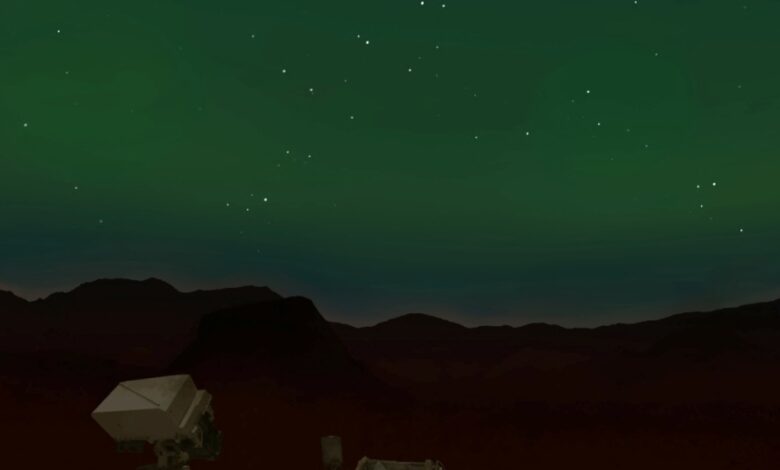
NASA’s Perseverance rover has made a groundbreaking observation on Mars, capturing the first-ever auroras visible to the naked eye on a planet other than Earth. The Martian night sky glowed softly green on March 18, 2024, following an intense solar event.
Scientists explained that the aurora was triggered when ultra-high-energy particles from the Sun collided with Mars’ atmosphere. This interaction caused the atmosphere to emit a faint green glow across the entire planet—an unprecedented event for visible auroras beyond Earth. Until now, auroras on Mars had only been detected from orbit in the ultraviolet spectrum.
“The green glow on Mars is due to charged solar particles interacting with oxygen in the Martian atmosphere,” said Eliza Wright-Knutsen, a postdoctoral researcher at the University of Oslo’s Centre for Space Sensors and Systems and lead author of the study published in Science Advances.
“While Mars’ auroras are much fainter than those on Earth, during strong solar storms, the entire Martian sky can glow green from horizon to horizon. It would be a breathtaking sight for future astronauts,” Knutsen added.
The event followed a solar flare and coronal mass ejection three days earlier. These massive solar eruptions sent waves of energetic particles hurtling through the solar system, ultimately bombarding Mars.
Anticipating the solar storm, scientists had prepared the rover’s instruments in advance. Two of Perseverance’s tools are designed to detect visible light—wavelengths detectable by the human eye — making it possible to capture the glow as it occurred.
Auroras form similarly on both Earth and Mars: charged solar particles collide with atmospheric atoms and molecules, causing electrons to emit photons, or light particles. However, the absence of a global magnetic field on Mars means the auroras can blanket the entire planet, rather than being concentrated at the poles as on Earth.
This remarkable discovery not only deepens our understanding of Mars’ atmospheric dynamics but also hints at the beauty future explorers might witness during long-term missions on the Red Planet.












